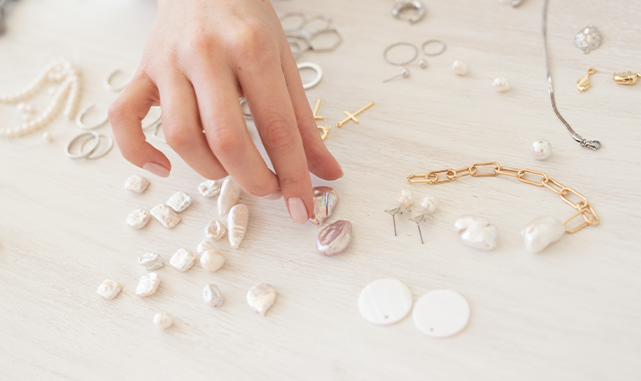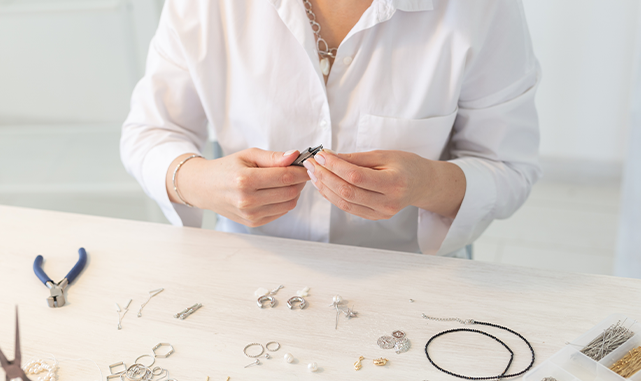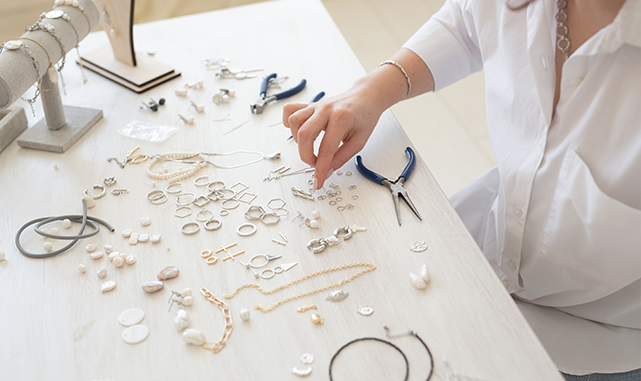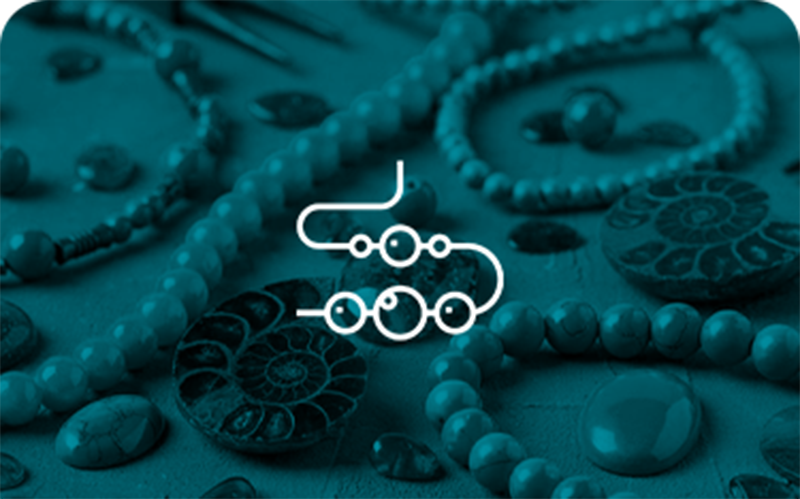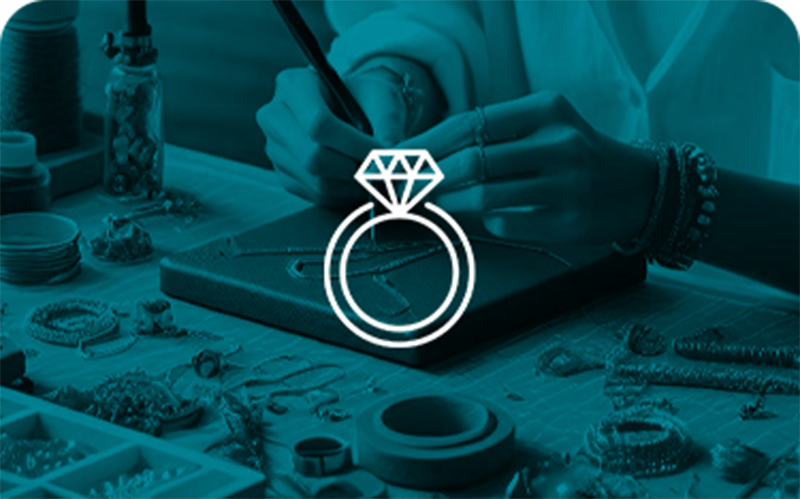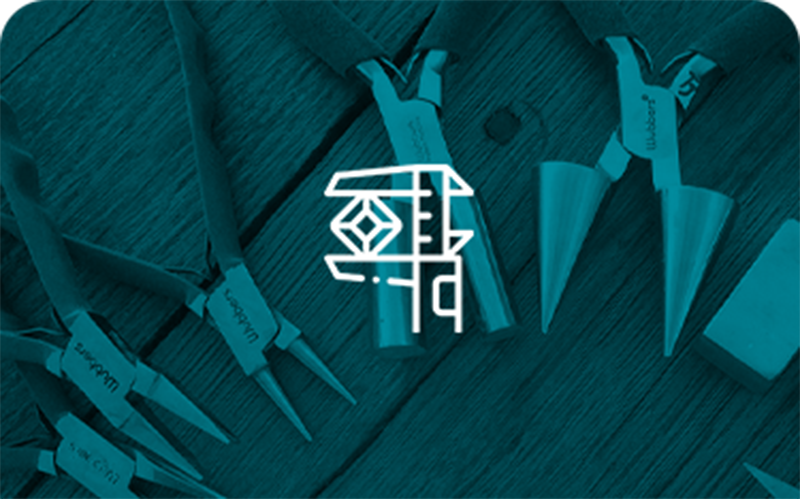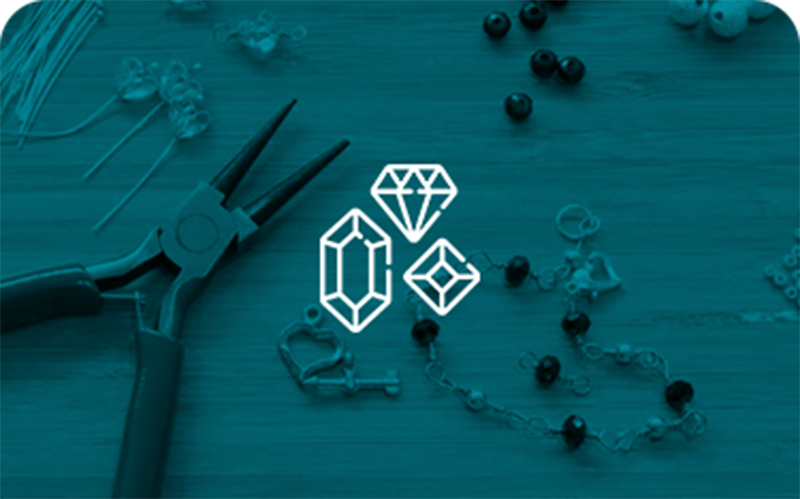
FAQs
Frequently Asked Questions
(FAQs) About Making Jewelry
Welcome to our Jewelry Making Classes FAQs page! Whether you’re a beginner or an experienced jeweler looking to expand your skills, we’ve gathered the most common questions about our classes. Below, you’ll find helpful information about beaded jewelry, clay jewelry, metalsmithing, and more. To find the right class for you, check out our comprehensive directory of jewelry-making courses.
Navigate to FAQ’s About:

Beaded Jewelry FAQ’s

Clay Jewelry Classes FAQ’s

Metalsmithing Classes FAQ’s

Other Jewelry-Making Classes FAQ’s

Jewelry Making Tools FAQs

Jewelry Making Supplies FAQs
Learn, Create, and Connect Through
Hands-On Classes
Master the Art of
Jewelry Making in Person
Do you thrive in a collaborative, face-to-face learning setting? In-person jewelry-making classes offer the chance to fully immerse yourself in the creative process. Guided by skilled instructors, you’ll enjoy direct support, tailored feedback, and access to professional tools and materials to bring your designs to life.
Build connections with fellow jewelry enthusiasts, exchange ideas, and celebrate your progress in a dynamic, encouraging environment. Ready to take your skills to the next level? Discover nearby classes and start your journey today!
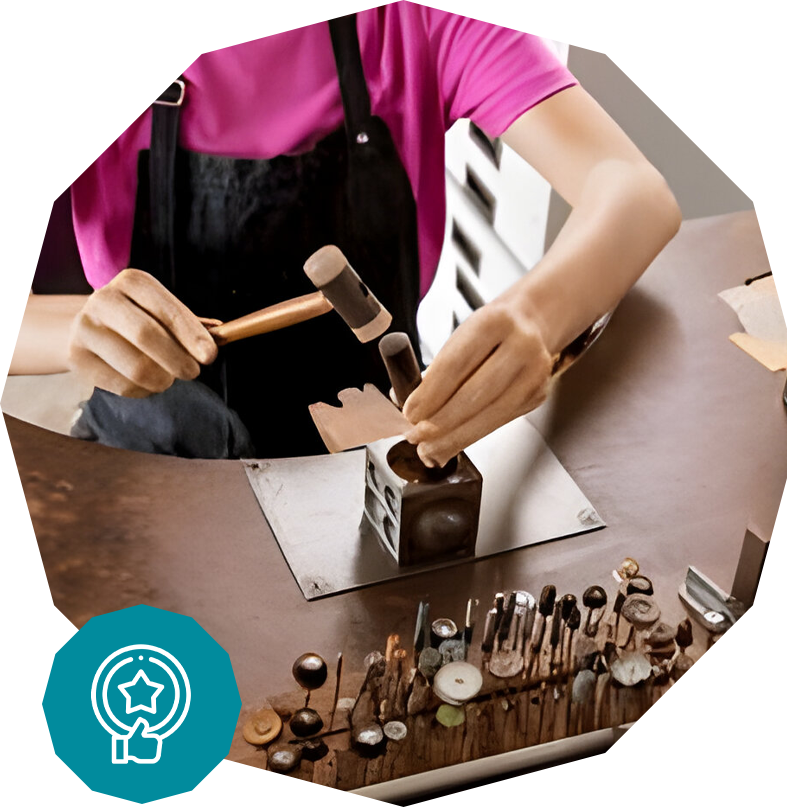

Fun, Supportive, Online Jewelry Classes
Wondering Where You Can
Find support in Your Jewelry
Making Journey?
Lucy Walker Jewelry offers a supportive, vibrant community where jewelry makers can connect, learn, and grow together. Through online classes, students gain access not only to expert instruction but also to a network of like-minded individuals who share a passion for jewelry making. Whether you’re just starting or looking to refine your techniques, the community provides encouragement, advice, and feedback at every stage.
With Lucy Walker Jewelry, students receive the guidance they need to confidently create beautiful pieces. Start with a 7-day free trial and join a creative community that supports your jewelry-making journey!
